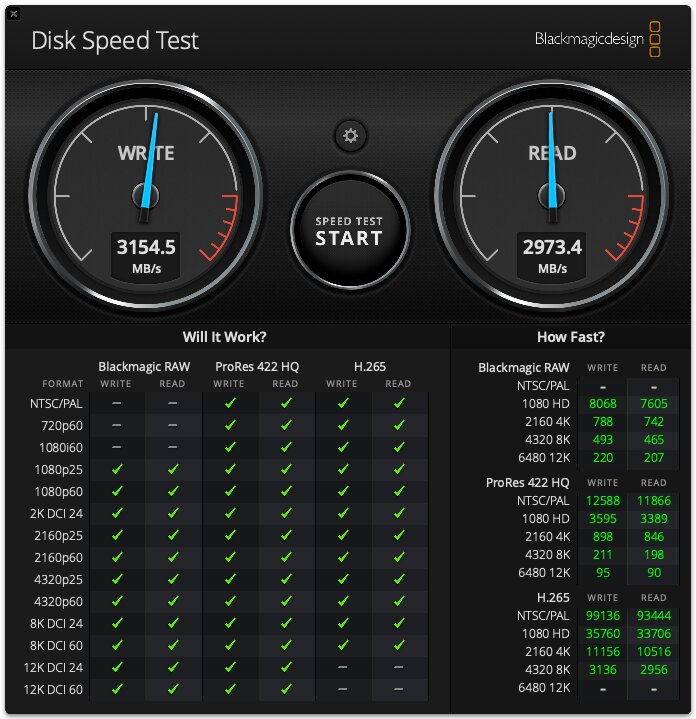As with other MacBook models from Apple, the new MacBook Pro (2023) with M2 chip is also a step backwards in SSD performance compared to its predecessor. The website 9to5mac has determined that the read and write performance of the 512 GB SSD is lower than that of the MacBook Pro with the M1 chip.
Screenshots with the benchmark software Disk speed tests show that around 3,150 MB/s for reading and 2,970 MB/s for writing are possible in the new MacBook Pro with M2. In the older MacBook Pro with M1, on the other hand, it reads 3,950 MB/s and writes a much higher 4,900 MB/s.
 MacBook Pro with M2 and 512 GB SSD (Image: 9to5mac)
MacBook Pro with M2 and 512 GB SSD (Image: 9to5mac)< figure class="thumbs__figure thumbs__figure--has-caption">  MacBook Pro with M1 and 512 GB SSD (Image: 9to5mac)
MacBook Pro with M1 and 512 GB SSD (Image: 9to5mac)
Even if this only reflects the theoretical maximum of the installed 512 GB SSD and the differences can be smaller in practice, the step backwards in SSD performance cannot be denied.
Fewer memory chips for the same capacity
A possible and obvious explanation for the lower performance is also provided in the report: In the new version, the SSD has only half as many NAND chips. Accordingly, these have twice the data density, but as is well known, SSDs benefit from the distribution of access to many chips so that the memory channels of the controller are utilized as best as possible. It is often the case that a model with more memory chips also delivers more throughput despite otherwise identical components.
The same with the MacBooks from 2022
Looking back into the recent past, this discovery is no longer a surprise. Because even with the MacBook Pro 13 (2022) with M2, the 256 GB SSD of the basic version was a big step backwards compared to the predecessor. The same was noticed with the new MacBook Air and confirmed by Apple. A spokeswoman for the company explained last summer that the new MacBooks with M2 should still be faster than their predecessors with a faster SSD in “real world activities”, i.e. practical applications.